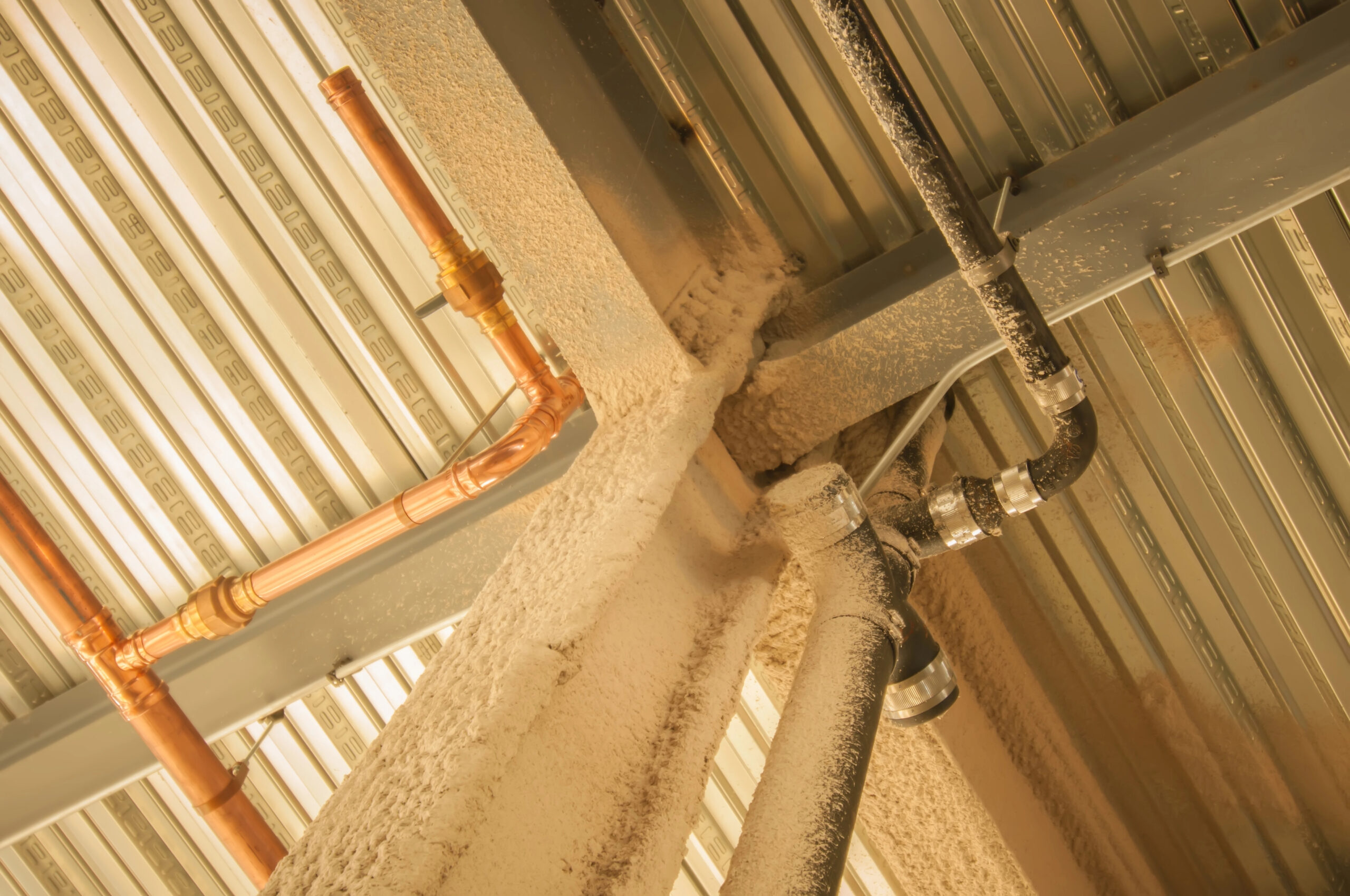Did you know that fires cause billions of dollars in damages each year and are one of the leading threats to buildings worldwide? For commercial property owners, the financial and safety risks of fire are immeasurable. Fireproofing isn’t just a box to tick for compliance. No, it’s a critical safety measure that safeguards lives, assets, and property values.
Among the various methods of fireproofing, spray fireproofing stands out for its efficiency, cost-effectiveness, and ability to protect large-scale structures comprehensively. At Sharp NC Group, we specialize in sprayed fireproofing and spray-applied insulation for commercial and multi-family buildings across the Carolinas. As a trusted Division 7 contractor, we’re committed to ensuring life safety, structural integrity, and energy efficiency in every project.
This blog post will walk you through the benefits of spray fireproofing, the materials involved, application methods, and even real-world success stories to help you make informed decisions for your property.
Key Benefits of Spray Fireproofing for Building Safety
Investing in spray fireproofing is an essential step that offers an array of advantages. Here’s why it’s a smart decision for building owners.
1. Fire Resistance That Meets Strict Codes
Spray fireproofing helps buildings meet fire resistance ratings, which are often a requirement under international and local building codes. It safeguards key structural components like steel beams, preventing them from weakening or collapsing during a fire.
2. Cost-Effective Protection
Unlike other fireproofing methods, spray fireproofing offers cost efficiency at scale. Its quick application process and minimal labor requirements make it an economical solution for both small businesses and larger commercial facilities.
3. Preservation of Structural Integrity
Steel and concrete buildings are especially vulnerable to the extreme heat produced during a fire. Spray fireproofing insulates these materials, significantly delaying heat transfer and giving occupants more time to evacuate.
4. Versatility for Various Surfaces
Whether your building is constructed from steel, concrete, or even wood, spray fireproofing materials can adhere to almost any surface, providing seamless protection.
5. Enhanced Safety and Peace of Mind
Knowing your property—and everyone in it—is protected against the devastating effects of fire can offer invaluable peace of mind.
Understanding the Types of Fireproofing Materials Available
Not all fireproofing materials are created equal. Knowing your options can help you align the right material with your building’s needs.
1. Cementitious Fireproofing
This lightweight, cement-based spray is one of the most commonly used options due to its affordability and ease of application. It’s ideal for steel structures and non-concealed areas prone to high heat.
2. Intumescent Coatings
Unlike cementitious coatings, intumescent coatings expand when exposed to heat, forming a protective layer that shield structures from fire. These are best for visible surfaces where aesthetics are a concern, but they tend to cost more.
3. Fibrous or Mineral Wool Fireproofing
Known for its durability and noise-damping properties, fibrous fireproofing is a good option for industrial units. However, it’s less commonly used in commercial buildings.
4. Specialized Options
New-generation fireproofing materials include eco-friendly and high-performance products targeting niche applications.
The Process of Applying Spray Fireproofing in Detail
Worried about how disruptive spray fireproofing might be? You’ll be relieved to know the process is relatively straightforward and quick. Here’s a breakdown of how it works.
1. Inspection and Surface Preparation
Professionals will evaluate your building structure and clean the surfaces to ensure optimal adhesion of fireproofing materials. Any dirt, rust, or oils must be removed.
2. Material Selection
The next step is choosing the appropriate fireproofing material, specific to your building’s requirements and its local fire safety codes.
3. Application of Fireproofing
Specialized equipment sprays the selected material onto surfaces in one or more controlled layers. The process can be completed quickly, depending on the building’s size and complexity.
4. Drying Time and Inspection
Post-application, the fireproofing material needs time to dry and cure. A certified inspector typically reviews the work to ensure it meets regulatory standards.
5. Ongoing Maintenance
While fireproofing materials require minimal upkeep, periodic inspections ensure they remain intact and functional over time.
Future Innovations in Fireproofing Technology
The fireproofing industry is evolving, with exciting technological developments on the horizon.
1. Eco-friendly Fireproofing
Sustainable and non-toxic alternatives are gaining traction, particularly in green building projects.
2. Predictive Technology
AI-driven fire risk assessment tools are improving, promising more precise recommendations for fireproofing different types of buildings.
3. Integrated Systems
Future fireproofing solutions may integrate with smart building systems, offering on-demand assessments and real-time alerts when issues are detected.
Why Building Safety Starts with You
Fire safety might not seem like a top priority—until it’s too late. Proactively investing in spray fireproofing helps to save lives, reduce costs, and preserve your building’s long-term value.
If you’re ready to take a critical step in fire safety, contact our spray fireproofing professional team to get started.

